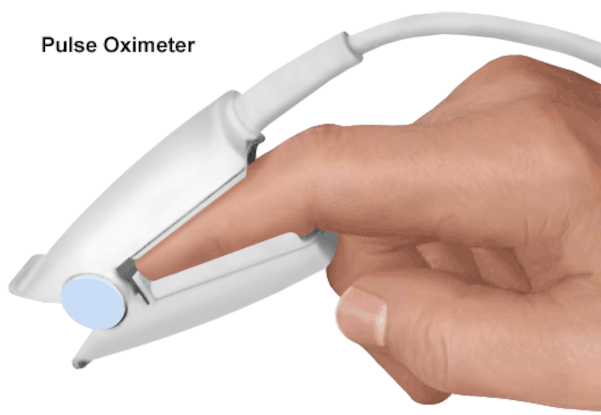
Basic understanding of the pulse oximeter
What is a pulse oximeter?
Oxygen binds to haemoglobin in red blood cells when moving through the lungs. It is transported throughout the body as arterial blood. A pulse oximeter uses two frequencies of light (red and infrared) to determine the percentage (%) of haemoglobin in the blood that is saturated with oxygen. The percentage is called blood oxygen saturation, or SpO2. A pulse oximeter also measures and displays the pulse rate at the same time it measures the SpO2 level.
What can be learned by monitoring blood oxygen saturation?
Oxygen in the atmosphere is brought into the lungs by breathing. Each lung contains nearly 300 million alveoli which are surrounded by blood capillaries. Since alveolar walls and capillary walls are very thin, oxygen passing into the alveoli immediately transfers into the blood capillaries (usually in adults, the transfer would take about 0.25 seconds while resting.)
A large proportion of the oxygen diffusing into the blood binds to haemoglobin in the red blood cells, while a part of the oxygen dissolves in the blood plasma. Blood enriched with oxygen (arterial blood) flows through pulmonary veins, then into the left atrium and left ventricle, and finally circulates throughout the body’s organs and their cells. The amount of oxygen transported around the body is determined mainly by the degree to which haemoglobin binds to oxygen (lung factor), haemoglobin concentration (anaemic factor), and cardiac output (cardiac factor).
Oxygen saturation is an indicator of oxygen transport in the body
, and indicates if sufficient oxygen is being supplied to the body, especially to the lungs.
The pulse oximeter can also measure the pulse rate. The volume of blood being pumped by the heart per minute is called the cardiac output. The frequency of pumping during one minute is called the pulse rate. These cardiac function indicators can be determined by the pulse oximeter.


